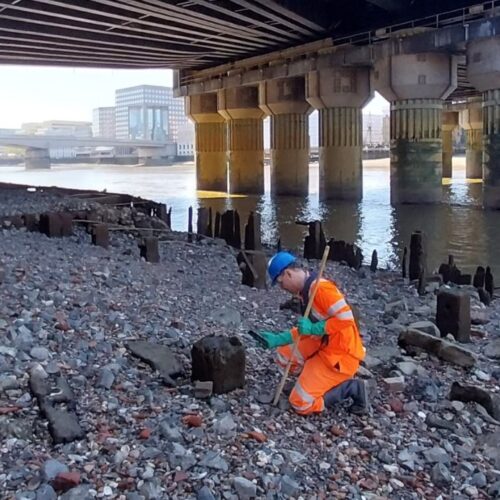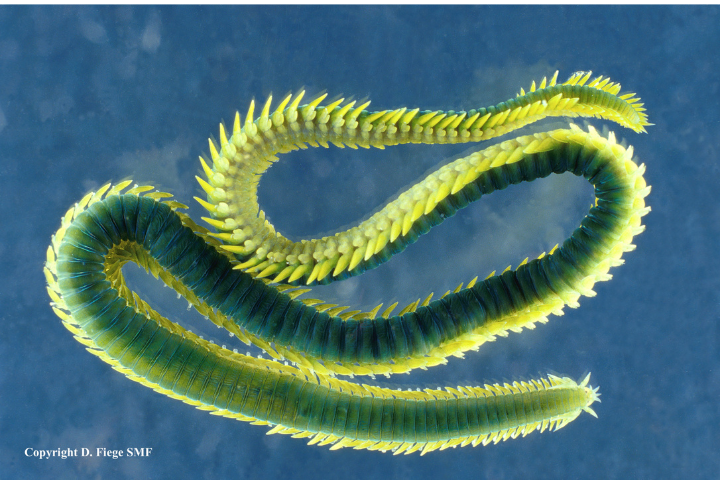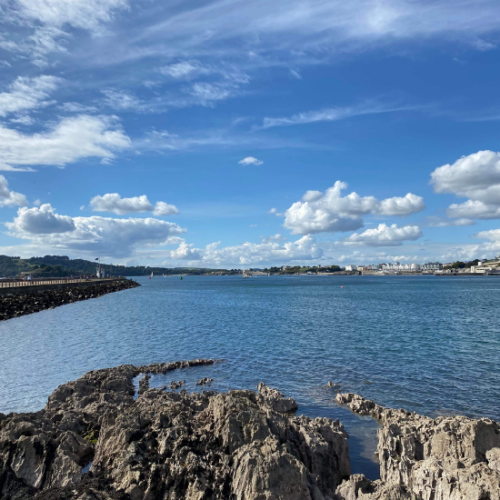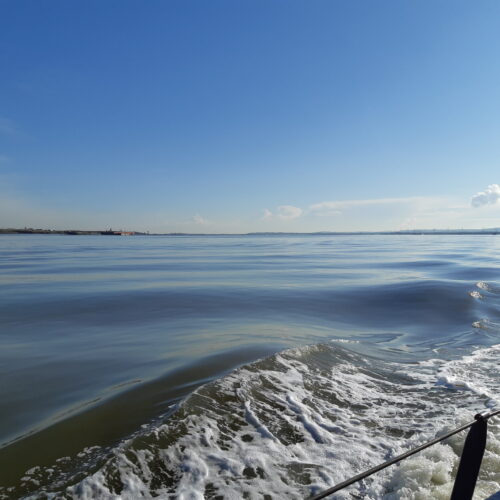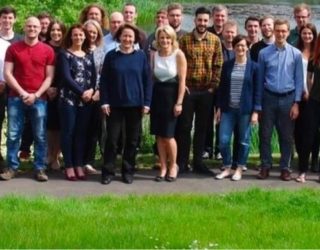Over the course of a tidal cycle, all organisms which live on the shore are exposed to highly variable environmental conditions. At high tide, when the majority of the shore is submerged, environmental conditions are generally fairly stable and hospitable for marine life. As the tide falls, increasing areas are exposed to air, introducing a risk of animals and algae drying out (Figure 1). This is known as desiccation stress. Even in rockpools or other areas which remain damp, such as crevices or under boulders, the temperature on the shore varies significantly more out of the water compared to when submerged. In warmer conditions, as water evaporates from rockpools or crevices, the salinity of any remaining water will increase. In contrast, any rain or freshwater runoff will reduce salinity. In short, life in the intertidal is tough. Animals have formed complex relationships with each other and their environment to survive in this often inhospitable environment.
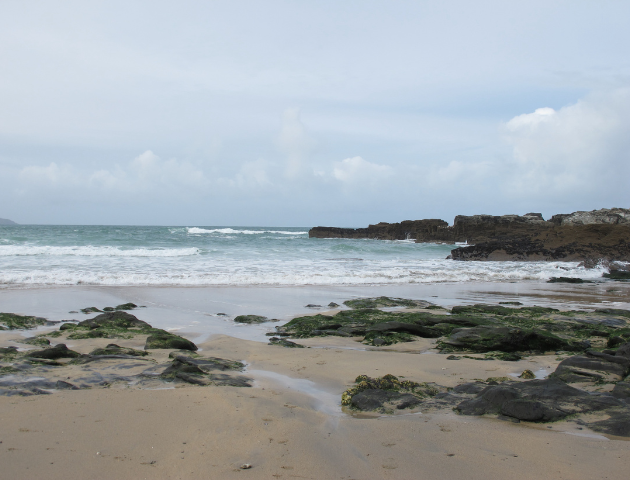
Typical artificial coastal structures, such as seawalls and coastal developments, lack the natural heterogeneity present on rocky shores (Figure 2). They are therefore not suitable alternatives to natural rocky shores which is reflected in their lower abundance and diversity of life (1). When this is taken into consideration alongside predicted sea level rise a phenomenon known as coastal squeeze occurs, whereby the size of the whole intertidal area gradually decreases as sea levels rise and the coastline is prevented from retreating by coastal defences (2). In some instances, coastal squeeze has been alleviated through a series of managed coastal realignment projects, where existing defences are allowed to fail, re-instating historic intertidal areas. However, this approach is only possible where the land that will be flooded is undeveloped or of relatively low value and in most urbanised areas this is not an option. So how can coastal developments avoid damaging the environment or even increase biodiversity? A number of options are available depending on the area, type of habitats and the stage of the development involved. The addition of mitigation measures to coastal developments and defences is commonly referred to as “greening grey infrastructure”(3).
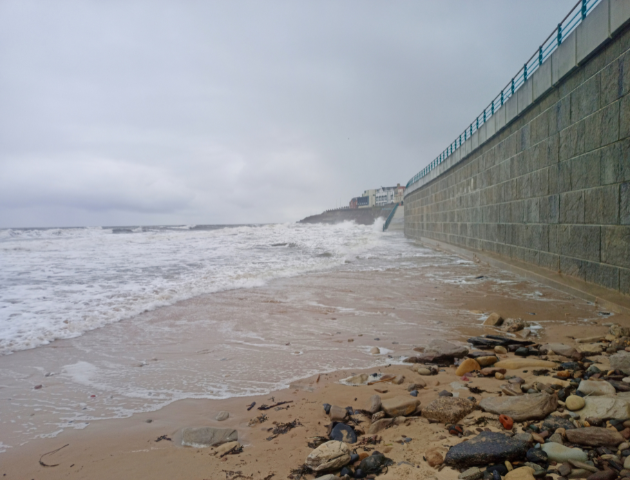
One option to improve the biodiversity of structures, such as seawalls, is to increase the three dimensional complexity of the seawall surface. Complexity can be added in a number of ways, such as texturing the structure during construction, drilling pits or adding textured panels and even adding entire prefabricated rockpools to existing structures. Ultimately, the goal of all of these methods is the same. Increasing the heterogeneity of the structures will create surface microhabitats, resulting in variations in water retention and providing more attachment sites for animals and algae to colonise. Multiple studies have attached artificial rockpools to structures, such as seawalls at various heights to mimic a natural rocky shore (4, 5). By introducing areas which retain water throughout the tidal cycle a refuge is provided for a range of flora and fauna, which would otherwise be exposed for at least a portion of the tidal cycle. In addition, the attached pools will create a shaded and damper area, further increasing the diversity of microhabitats on the otherwise uniform seawall. Over time, these rockpools have been colonised by a range of algae and organisms, showing increased abundance and diversity of life when compared to the unimproved sea defences (4, 6).
In estuarine areas and urbanised rivers or where rocky habitats are rarer, a common approach is to create “eco terraces” by building structures which retain sediment and encourage colonisation by intertidal or salt tolerant flora. By varying the type and the height of the terraces a wide range of habitats can be created along the riverbank. The retention of sediment also provides habitat for invertebrates which in combination with the presence of vegetation can create valuable nursery and feeding areas for fish and birds (7).
Concerns exist regarding the potential of retrofitting features, such as artificial rockpools to undermine the structural integrity of key coastal defences. However, due to the scale of many methods currently used they are unlikely to have any impact on coastal defences (3). In addition, incorporating mitigation measures into the design phase of new developments can circumvent the risks involved with retrofitting and speed up the colonisation of these new features (4).
Another common concern is that mitigation measures will be colonised by invasive non-native species (INNS) and will contribute to their success. However, although artificial marine structures are typically colonised by INNS, they are novel habitats, often only suited to a select few species. By contrast, environments with greater diversity have been shown to be more resilient to INNS, essentially, when all ecological niches are occupied, invasive species are not able to find a way in (8). By increasing the diversity of habitats the overall biodiversity of artificial structures can be increased making these ecosystems more resilient to INNS (5).
While this is still a relatively new and emerging field, the greening of grey infrastructure can provide a valuable tool to support and restore impacted ecosystems in a changing world.
Author: Dale Irvine
References
1. Bulleri F. & Chapman M.G. (2004). Intertidal assemblages on artificial and natural habitats in marinas on the north-west coast of Italy. Marine Biology, 145(2): 381-391.
2. Pontee N.I. (2011). Reappraising coastal squeeze: a case study from north-west England. Proceedings of the Institution of Civil Engineers-Maritime Engineering, 164(3):127-138.
3. Naylor L.A., Kippen H., Coombes M.A., Horton B., MacArthur M. & Jackson N. (2017). Greening the Grey: a framework for integrated green grey infrastructure (IGGI). University of Glasgow report. URL: http://eprints.gla.ac.uk/150672
4. Hall A.E., Herbert R.J., Britton J.R., Boyd I.M. & George N.C. (2019). Shelving the coast with vertipools: retrofitting artificial rock pools on coastal structures as mitigation for coastal squeeze. Frontiers in marine science,6: 456.
5. O’Shaughnessy K.A., Hawkins S.J., Evans A.J., Hanley M.E., Lunt P., Thompson R.C., Francis R.A., Hoggart S.P., Moore P.J., Iglesias G. & Simmonds D. (2020). Design catalogue for eco-engineering of coastal artificial structures: a multifunctional approach for stakeholders and end-users. Urban Ecosystems, 23(2): 431-443.
6. Evans A.J., Firth L.B., Hawkins S.J., Morris E.S., Goudge H. & Moore P.J. (2015). Drill-cored rock pools: an effective method of ecological enhancement on artificial structures. Marine and Freshwater Research, 67(1): 123-130.
7. Environment Agency (2022). Estuary Edges: Ecological Design Advice. https://www.ecrr.org/Portals/27/Publications/Estuary%20Edges%20-%20design%20advice.pdf [Accessed 28/10/2022].
8. Stachowicz J.J., Fried H., Osman R.W. & Whitlatch R.B. (2002). Biodiversity, invasion resistance, and marine ecosystem function: reconciling pattern and process. Ecology, 83(9): 2575-2590.
Photographic credits
Figure 1: Ruth Barnich, Thomson Environmental Consultants
Figure 2: Dale Irvine, Thomson Environmental Consultants


